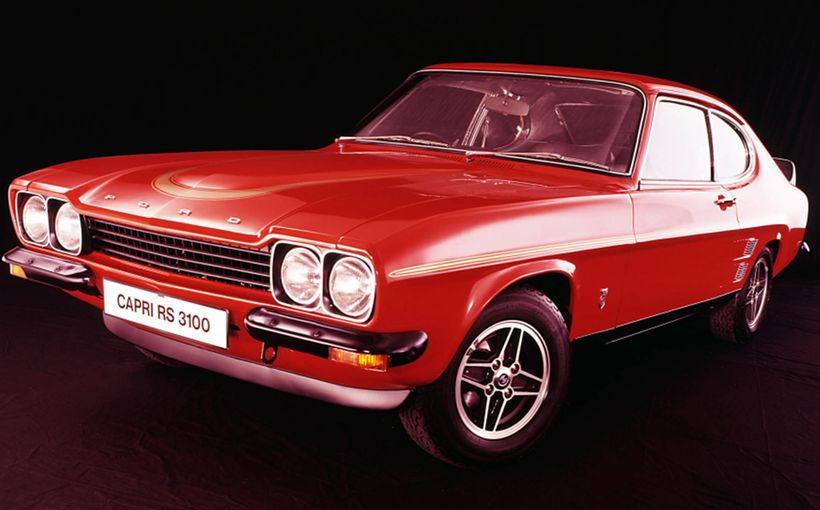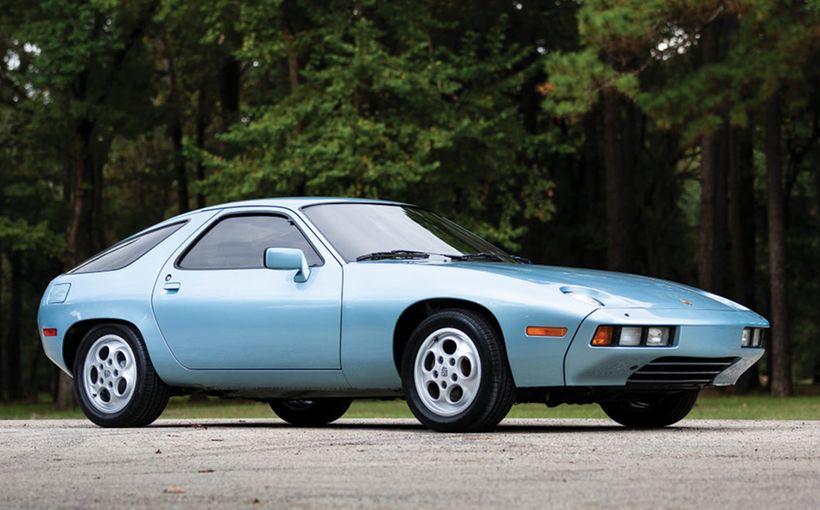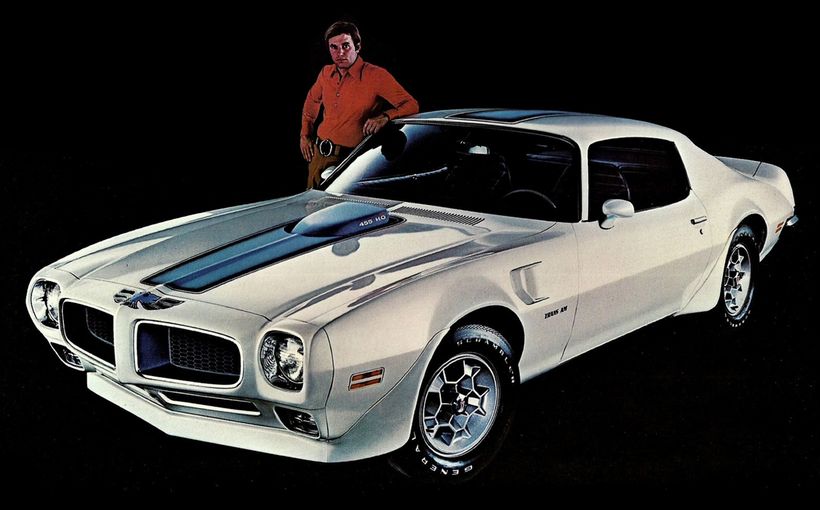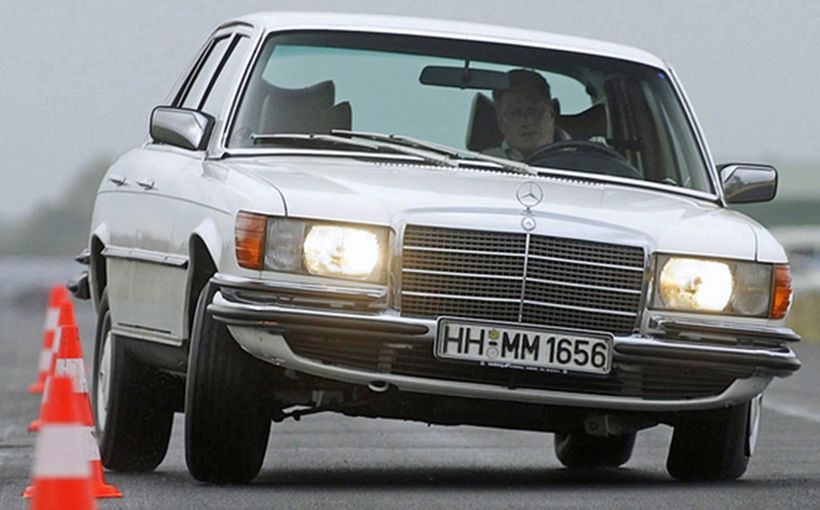Simca Aronde: World Record Breaker. Armstrong 500 Champion.

France built some amazing cars in the 1950s and 1960s like Citroen’s astonishing DS, Peugeot’s rugged 203, 403, 404 and 504 quartet and Renault’s rear-engined R8, which all shared common traits of rugged durability, excellent ride quality on rough roads and outstanding performance in competition use.
However, there was another great French car which shared all of those desirable attributes but also holds the unique distinction of finishing first, second and third in Australia’s greatest motor race – the Simca Aronde.
This superb achievement occurred at Phillip Island on November 20, 1960 which was the first running of the Armstrong 500; a gruelling race for showroom stock mass-produced road cars that would move to Bathurst in 1963 and become Australian motor sport’s greatest prize.
The Simcas dominated their class, which was of great significance in the formative years of the 500 when only class wins were awarded and no outright winner was officially recognised. It enhanced the Aronde’s growing reputation as being surprisingly speedy, agile and more than tough enough for Aussie roads. A bright future lay ahead for the French marque had it continued in Australia.

Simca was an acronym for Société Industrielle de Mécanique et Carrosserie Automobile, the rather lavishly-named car company established in 1934 by Italian-born Henri-Theodore Pigozzi. Simca started out building Fiats under licence prior to WW2, but after hostilities ended Pigozzi pursued his dream of building his own Simcas.
In 1951 Simca released the 9 Aronde, which was a French word for ‘swallow’ in keeping with the marque’s bird-themed logo. It featured the latest unitary body construction, which offered good chassis rigidity with a relatively light kerb weight of around 950kg.
With independent twin-wishbone front suspension, a leaf-spring live rear axle and large finned drum brakes on each corner, the new Simca relied on 45bhp from its 1.2 litre OHV ‘Flash’ four cylinder engine and a four-speed column-shift gearbox to reach a top speed of 74mph (119km/h).
While 45 horses today might seem like they’d struggle to pull a hair out of your nose, these things are all relative; the Aronde’s kerb weight, power output and top speed were line-ball with Peugeot’s benchmark Redex Trial-winning 203, which was launched in 1948 and like the Simca was selling up a storm in the early 1950s.

The flamboyant Pigozzi knew how record-breaking runs could immediately translate to increased sales. So in May 1952, on the steeply-banked Montlhery oval circuit south of Paris, the new 9 Aronde did just that, breaking numerous international records by covering 50,000km (31,000 miles) non-stop at an impressively high average speed of more than 70mph (112km/h).
Stung by suggestions the car had been specially prepared, in August 1953 Pigozzi arranged another record-breaking attempt at Montlhery that was twice as hard. This time, under the supervision of the Automobile Club of France, another 9 Aronde was randomly selected from the Paris production line and over a biblical-sized period of 40 days and 40 nights (almost six weeks non-stop) it covered 100,000km (62,000 miles) at an average speed of more than 100km/h (62mph), smashing multiple international records in the process.
Not surprisingly, the 9 Aronde’s combination of ruggedness, speed and agility made it a popular choice for rally drivers, with numerous examples competing in famous events like the Monte Carlo Rally, Coronation Rally (aka East African Safari), Tour de Corse (Rally of Corsica) and Rallye du Maroc (Moroccan Rally) which with its long Dakar-style desert stages was won twice by the French cars in 1952 and 1954.
The Aronde’s sporting qualities were already beyond question when Simca launched a facelifted and more powerful version in 1955 called the 90A, with a longer stroke and higher compression 1.3 litre version of the Flash four with 48bhp. A magazine test of the 90A recorded a higher top speed of almost 84mph (134km/h) and 0-60mph (100km/h) in just under 20 seconds, which were amongst the best figures in its class.

The Australian Connection
As Simca sought to spread its swallow wings across the globe, in 1956 Aronde sedans started being assembled in Australia from CKD (Completely Knocked Down) kits, involving both Northern Star Engineering and Continental & General Distributors in Melbourne.
However, Chrysler also wanted to spread its global footprint and bought a share of Simca in 1958. This soon translated to local assembly and showroom sales of the A90 Aronde under Chrysler Australia, which re-equipped its Mile End plant in South Australia for the task using an increasing amount of local content including tyres, batteries, paint, window glass and interior trim.
As in Europe, the A90 Aronde created plenty of buyer traffic in Chrysler’s Australian showrooms as it quickly earned a reputation as an excellent compact family sedan with rugged durability, fine handling and braking, spirited performance and good fuel economy.

By 1956 the famous Redex Trials of the early 1950s had been replaced by similar but competing long distance trials staged by rival oil companies Ampol and Mobilgas. It was during this era that Simca Arondes started to appear, with solid if not winning results. However, just being amongst the survivors was solid proof of the French car’s ability to thrive in Australia’s harsh conditions.
The third and final iteration of the Aronde, the P60, was released in Europe in 1958 but did not reach Australian showrooms until early 1960. Although new styling embraced contemporary styling cues like a lower roof line, discreet tail fins and a wide concave grille, it was largely unchanged under the skin. The proven 1.3 litre Flash four featured a slight rise in compression ratio and power output to 52bhp. A stronger and more refined ‘Rush’ version released in Europe in 1960 (but not in Australia until 1962) featured a five-bearing crankshaft.
Modern Motor tested a P60 Aronde in its August 1960 issue and was most impressed, which suggested it would probably perform well in the first Armstrong 500 at Phillip Island later that year. In a 240-mile (385km) test, top speed was just over 80mph (130km/h) and fuel economy was a thrifty 31.5 mpg (9.0L/100km).

“The Aronde has always been a cheeky performer for its size - and the latest P60 version is a real goer,” the report claimed with enthusiasm.
“The new Simca’s a joy to drive. Steering is as light as a Maxim’s soufflé; brakes have a whopping 133 square inches of lining area, are highly resistant to fade and light to use. Headlights are up to performance.
“Handling is flat and stable with a nice shade of understeer at speed. Not the ideal balance for high- speed stuff, but safer than oversteer for the majority of Aronde owners who don’t extend the car at every opportunity.”
Criticisms were few: “The ride may be a trifle stern for commuting types; reaction on rough bitumen is distinctly felt. The four-speed column gear-change has been improved a bit but it’s still long and clumsy in action.”

According to Gavin Farmer’s excellent Chrysler Australia history ‘Great Ideas In Motion’ , that same year Simca proved the durability of its latest five-bearing crank engine with another record-breaking run at the less-than-pristine Miramas circuit in southern France, supervised by motor sport’s world governing body the FIA.
In 80 days (more than 11 weeks non-stop) a stock standard P60 Aronde covered 124,300 miles (almost 200,000km) at an average speed of 65mph (104km/h), setting no less than 114 new world endurance records in the process.
Simca fully leveraged such an astounding achievement in its advertising and sales material. As one brochure claimed: “Considering the test was run in winds up to 55mph, blinding sandstorms, extreme heat and an old cracked, uneven track, the new world endurance record also demonstrated the overall safety and stability of the Simca.” Boy, did it ever!

The Armstrong 500: Give ‘em the old 1-2-3!
Phillip Island has always been a magnificent motor racing circuit. Its open, undulating, high speed layout presents a formidable challenge for drivers and a vast choice of viewing options for spectators. Back in 1960, its only potential problem as host venue for a 500-mile race was the track surface, which had been laid several years before using a cold-mix bitumen and gravel compound.
Cold-mix road building was common at the time, as the smooth, hard-wearing hot-mix compounds we take for granted today were not widely available in Australia in the post-war 1950s. And as many Australian motorists of those times would attest, roads in those days could not withstand much punishment. After only three Armstrong 500s, the Phillip Island track would be reduced to rubble.
The rules for that first race were naively simple, yet provided a stable foundation from which this famous event would quickly build. For starters, all cars had to be manufactured or assembled in Australia. They also had to be stock-as-a-rock showroom specification, with the only freedoms being aftermarket bolt-on items like shock absorbers (from race sponsor Armstrong of course), tyres and batteries.

To improve driver safety, seat belts could be fitted (at a time when they were still optional in new cars!) and hubcaps removed. With the hazard of flying rocks and gravel expected, mud flaps were mandatory and windscreens could be either laminated or shielded by a sheet of Perspex. No driver could drive more than 300 miles (480 kms).
With the emphasis on durability, all cars had to complete the first 100 miles (160 km) without stopping for fuel, oil or a driver change. Any mechanical trouble that occurred during that time had to be fixed by the driver, without any help from the pit crew. Intriguingly, the winner of each class would be decided when the first car in the field completed 500 miles (800km) - yet there would be no award for outright winner. It didn’t take long for that to change!
The huge field of 47 cars was spread across five classes based on engine capacities comprising Class A (up to 750cc), Class B (751-1300cc), Class C (1301-2000cc), Class D (2001-3500cc) and Class E (over 3500cc). There were five Simca Arondes in Class B with three of them backed by Chrysler Australia and entered under the names of their dealers, steered by some big names including 1954 Redex Trial winner Jack ‘Gelignite’ Murray.

Against the French cars were two Triumph Heralds entered by local assemblers AMI, along with four VW Beetles and three Renault Dauphines (both marques also reportedly with factory support) and a lone Ford Anglia 105E.
After 167 laps and almost eight and half hours of racing, the bruised, battered and bug-splattered Vauxhall Cresta shared by Frank Coad and John Roxburgh was the first car to cross the finish line to an enthusiastic reception from the 40,000-strong crowd.

Only 35 of the original 47 starters were still circulating at the time, including three of the five Arondes which pulled off their famous trifecta in Class B. Interestingly, the winning Simca was not the latest P60 Aronde but the previous 90A model shared by Murray Galt, Billy Murray (no relation to Jack) and future Mitsubishi rally star Doug Stewart.
They finished two laps clear of the Jack Nougher/Lionel Marsh and Bob Brown/Michael Lempriere P60 models. The larger-than-life Jack Murray, who was also featuring in local marketing for the French marque, retired early with engine trouble; a problem that also sidelined rally ace Ray Christie and George Hughes.
1-2-3 in the 1960 Armstrong 500 was Simca’s zenith in Australia’s greatest race (talk about peaking too early!) that proved impossible to either repeat or improve on in following years.

A lone P60 in top-shelf ‘Montlhery’ trim for Bob Brown/Lionel Marsh/Michael Lempriere was entered in Class C (1001-1600cc) for the 1961 race. There it faced formidable competition from Peugeot’s impressive 403 sedans, which proved too strong over 500 miles and more than eight hours of racing, with Geoff Russell/David Anderson leading home Bill Coe/Ron Lilley in a dominant 1-2. The Simca finished third in class, one lap behind the second-placed 403.
With the 1962 Armstrong 500 class structures for the first time being based on retail prices (pre-decimal) rather than engine capacities, the P60 Aronde was in Class C for cars costing £901-£1050. Simca numbers increased again with four Arondes entered including the all-female driver pairing of Diane Leighton and Ann Bennett.
If the ‘girls’ were included as a strategy by Simca dealers to increase the Aronde’s appeal for female drivers they must have been delighted with their result, as the Leighton/Bennett Simca was the only one of the four to finish the race and in an excellent third in class behind the winning Renault Gordini and runner-up Morris Major Elite. The other three Arondes were eliminated in accidents, most probably caused by driving too hard on the dangerously disintegrating track.

The Simca Aronde made two more Armstrong 500 appearances after the race moved to Bathurst in 1963. A lone P60 for Ken Brigden/Bruce Smith finished 13th in Class B (£901-£1000) which was dominated by superior Mini Cooper, Cortina 1500 and Renault R8 rivals. The following year Digby Cooke and Chrysler dealer Alton Boddenberg claimed another 13th place in Class B against similar opponents.
1964 was the Simca’s final Bathurst appearance. This was not only due to it being uncompetitive in the race’s price-based class structures, but also due to Chrysler Australia dropping the Aronde sedan and locally-developed wagon that year to concentrate its limited resources on the full-size Valiant range.
The Simca Aronde’s time in Australia was relatively brief, but it did leave a favourable impression on thousands of loyal buyers and indeed motor sport competitors, headlined by its dazzling debut in the first Armstrong 500. As Chrysler’s famous ads often stated, it really was “some car, this Simca!”









